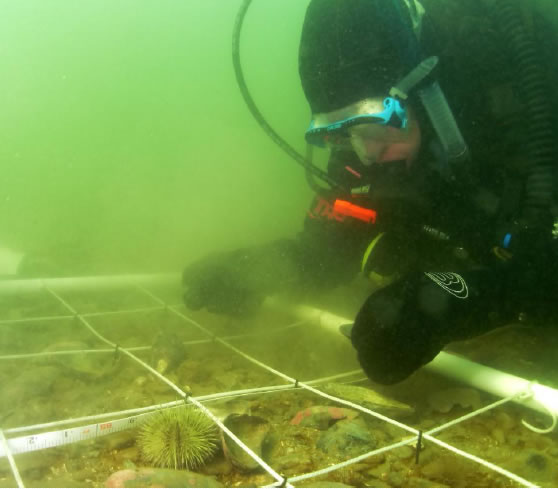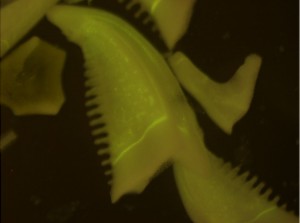Sea Urchin Growout Strategies

Sea urchin aquaculture is known as echiniculture. Strategies considered for grow-out of sea urchins to market include sea cages, sea ranching, and land-based tank systems. From 2009 – 2012 the Center for Cooperative Aquaculture Research (CCAR) worked with Larry Harris of the University of New Hampshire to investigate sea ranching and tank culture of sea urchins. The project was funded by the Northeastern Regional Aquaculture Center (NRAC). Hatchery seed were planted out at plots on three ocean lease sites, while another group from the same hatchery batch was reared at the CCAR in a tank system specially designed for urchins. All hatchery urchins released at the lease sites were first tagged in the hatchery with fluorochromes so that they could be identified with microscopy, following recapture and dissection of the jaws. Graduate student Pamelia Fraungruber and other divers collected urchins from the lease site plots every four months for two years and analyzed them for growth and presence or absence of the tag. At the same time, Pamelia reared 10,000 urchins in the tank system to market size, while testing such things as diets, feeding strategies, grading methods, stocking densities, growth and survival.

The project was extremely informative and it yielded valuable data that can be applied to future efforts. More information regarding our findings can be found below.
